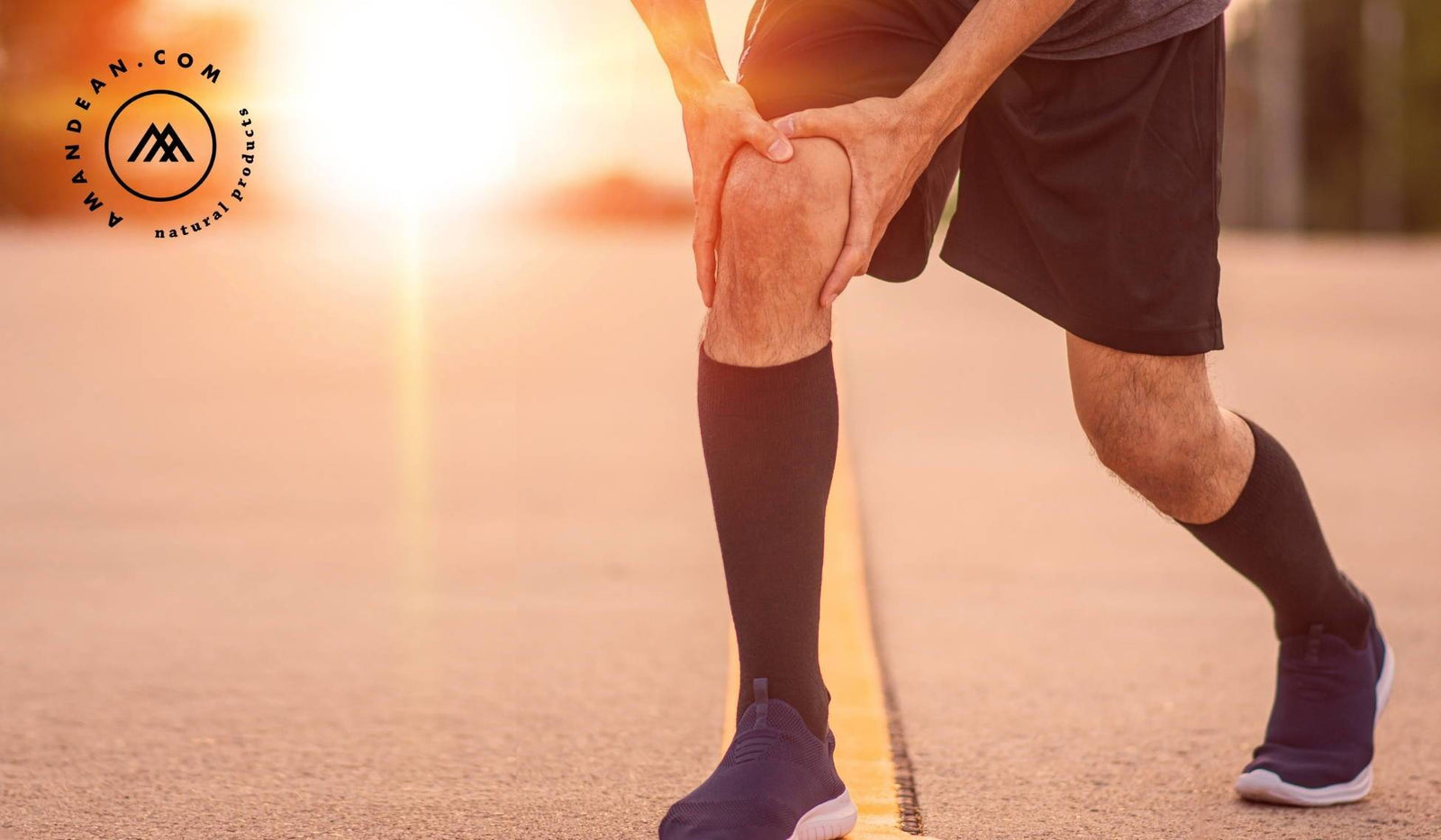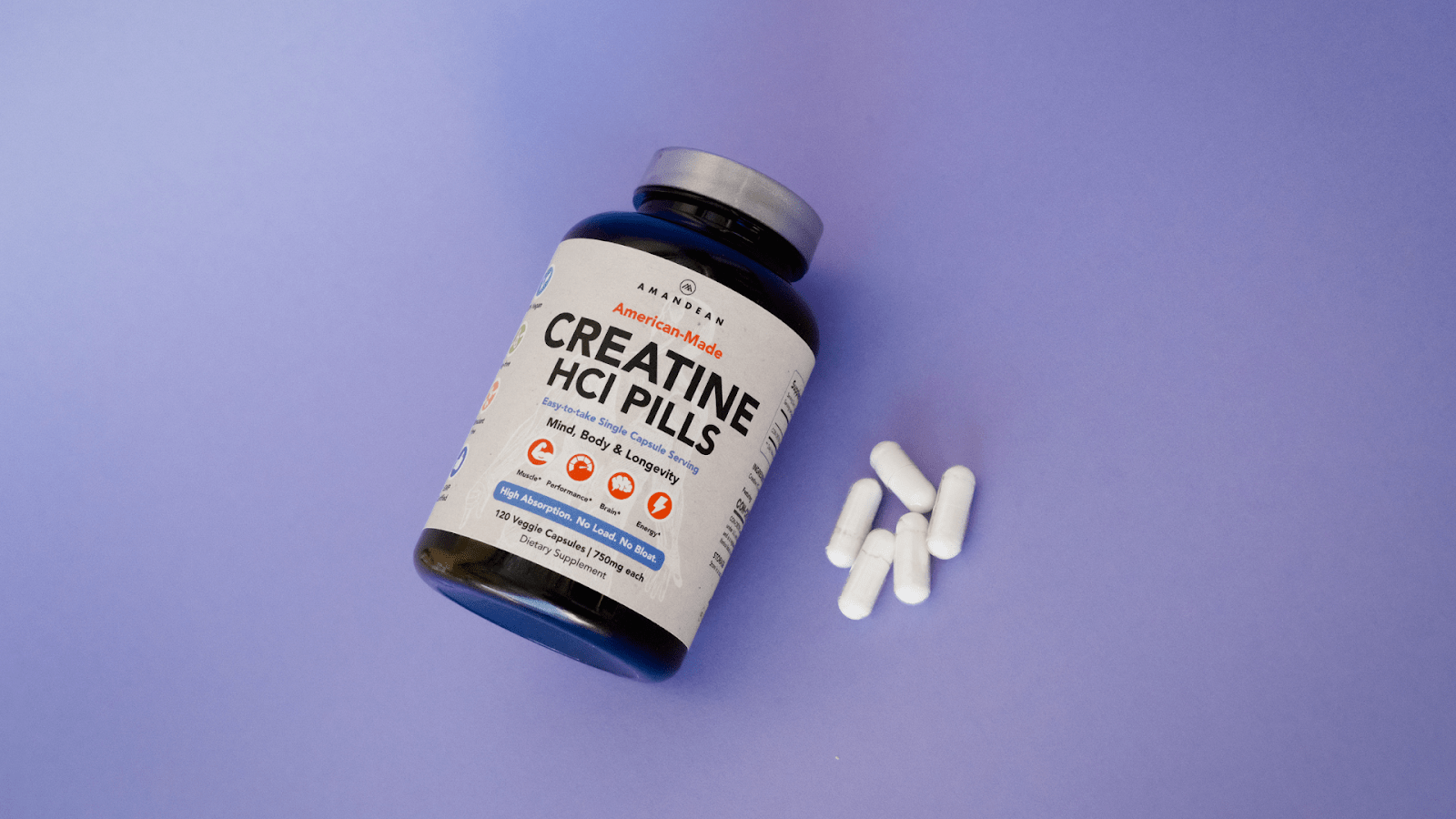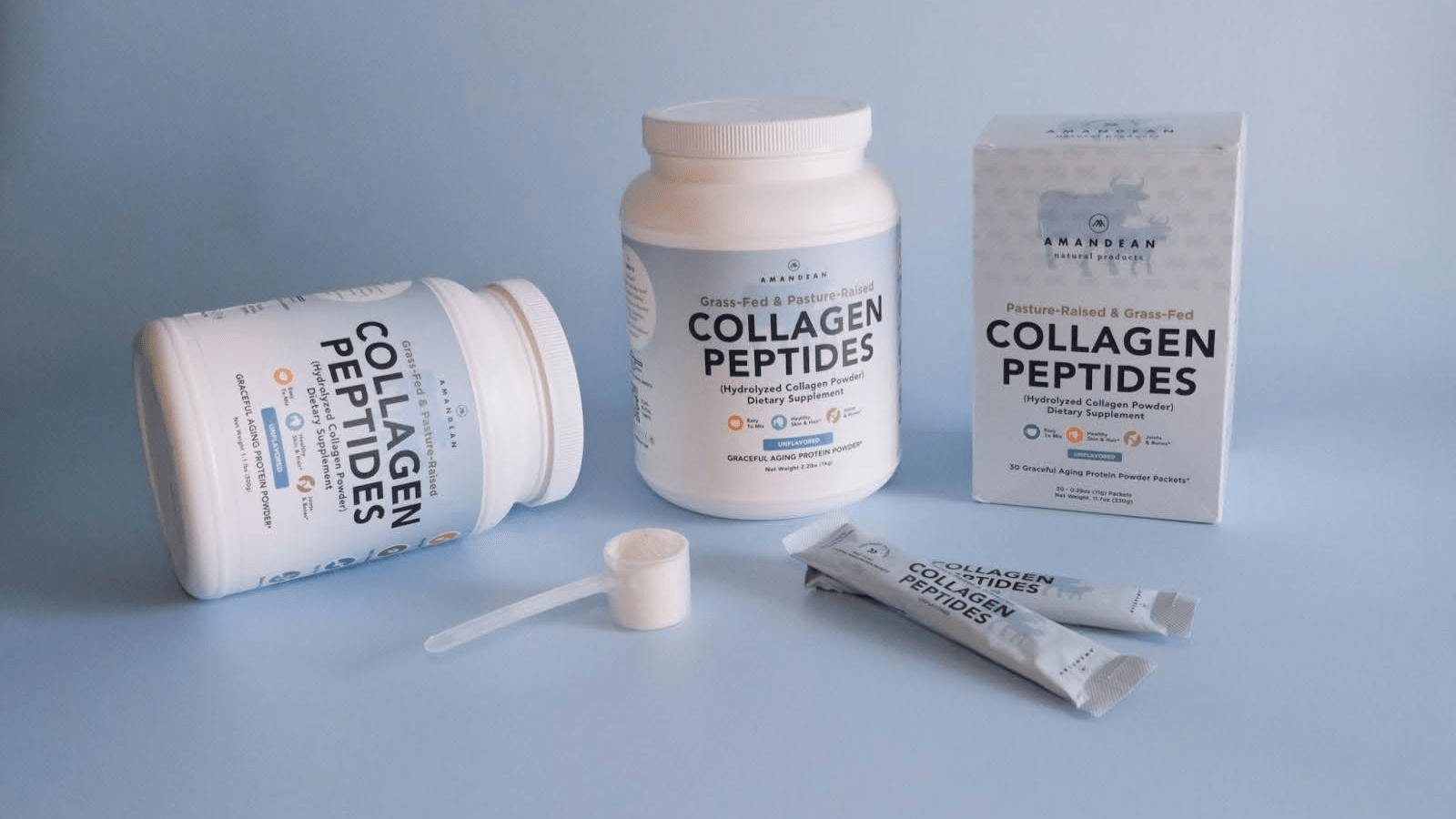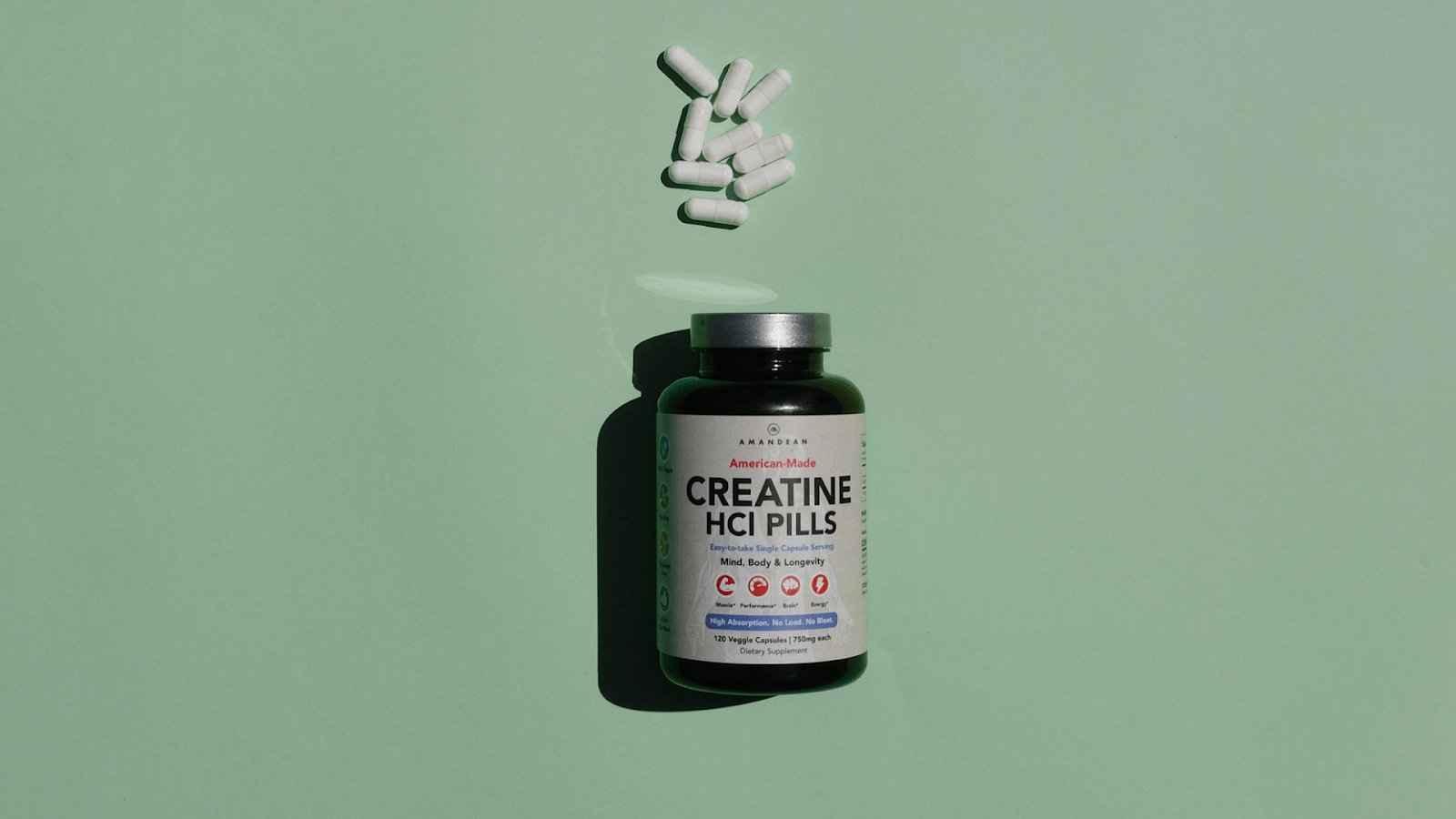Your Cart is Empty

August 02, 2021 10 min read
Collagen is a protein. Proteins are enormous, complex biological polymers. The human body is about one-fifth protein and collagen makes up about a third of those proteins, making it our most abundant protein. It is a fibrous protein found in bones, muscle, skin, and tendons. There are many different types of collagen, but most belong to type I, type II, and type III. These different types of collagen molecules have different structures and functions.
Amino acids are small molecules that always contain a nitrogen atom and provide the molecular structure of all proteins, including collagen.
Of the more than 500 naturally occurring amino acids scientists have identified, the human body uses just these twenty to make more than 100,000 unique proteins. Collagen uses nineteen of these twenty amino acids, the three most abundant of which are glycine, proline, and lysine.
Among these twenty amino acids, nine are considered "essential" because the body cannot synthesize them. Lysine is one of these, which means in order for collagen synthesis to occur a person must consume foods and beverages high in lysine. Fortunately, this is not difficult! Meat, seafood, and dairy are all high in lysine. If you're a vegetarian or vegan, don't worry, many non-animal sources of lysine exist. Beans, lentils, chickpeas, and soy products are high in lysine, as are many fruits and vegetables. Check out this article from Healthline: 40 sources of Lysine to Add to Your Plate.
Collagen exists in all animals, but the most common form in supplements and cosmetics is bovine collagen from cows and porcine collagen from pigs. Marine collagen, on the other hand, comes from fish skin and scales. Many folks prefer marine collagen due to religious or personal reasons that prevent their use of products derived from cows or pigs.

Marine collagen is an excellent source of type I collagen, the most plentiful collagen in our bodies. It’s also a key building block for maintaining the elasticity and firmness of the skin. In fact, the cosmetic industry has long recognized the skin-enhancing benefits of collagen. The trouble is, many cosmetic brands approach collagen backwards; it’s much more effective from the inside out, not the outside in. Collagen molecules are too large to penetrate the skin barrier, so dietary supplements should be taken instead of using topical collagen creams.
Marine collagen also offers a source of type III collagen, which supports arterial walls, making it key for cardiovascular health. Additionally, because it is more heavily concentrated in the intestines, type III collagen is often used to promote a healthy gut. Bovine collagen also contains Type I & III collagen, so the benefits are very similar. Many people choose one over the other due to dietary preferences alone.
When it is hydrolyzed for collagen supplementation, meaning when it is broken up into smaller, bioactive collagen peptides for easier digestion, it results in smaller peptides than from other types of collagen. This means marine collagen supplements have superior bioavailability compared to other types of collagen.
Some people claim marine collagen has a ‘fishy’ after-taste. If collagen is sourced from high-quality, non-farmed, wild-caught fish, there shouldn't be a fishy taste of any kind. The quality of ingredients has a lot to do with it.
Sudden or traumatic events like dislocations, fractures, and sprains are a serious cause of joint pain. Chronic conditions, on the other hand, are long-term causes of joint pain. Examples of chronic joint pain would include:
Take our quiz and find which supplements your body is craving.

Collagen is very high in the amino acid glycine, which helps the body make creatine. Creatine has been shown to help support muscle mass and exercise performance. It's also a concentrated source of proline, an antioxidant that helps reduce cellular damage that causes post-workout achiness.

Collagen also promotes bone strength. Studies suggest it increases the absorption of calcium, phosphorus, and other minerals into the body. The absorption was also connected to the activity of osteoblasts, bone cells that make bone and collagen.
When added to one's diet, marine collagen may improve:
Joints rely on cartilage for smooth operating. A healthful diet can help the body produce collagen. Nutrients that may support collagen formation include:

Boswellia is a herbal extract from the Boswellia Serrata tree. It has been used for centuries in Ayurvedic medicine to treat chronic inflammatory illnesses such as osteoarthritis and rheumatoid arthritis. Because Boswellia is an effective anti-inflammatory, it may prevent the loss of cartilage. They block an enzyme called 5-lipoxygenase (5-LOX) which breaks down polyunsaturated fatty acids in foods into leukotrienes, inflammatory molecules that attack joints and other tissues. Boswellia may also help reduce cartilage damage in arthritis.
Many clinical studies of Boswellia’s effect on osteoarthritis have found it is effective in treating joint pain and inflammation. In a randomized, controlled trial published in the journal Phytomedicine, Efficacy and Tolerability of Boswellia Serrata Extract in Treatment of Osteoarthritis of Knee, found that Boswellia extract possesses anti-inflammatory, anti-arthritic, and analgesic properties. It found that all participants with osteoarthritis who received Boswellia reported a decrease in knee pain compared to those who received a placebo. They also reported an increase in knee flexion and how far they could walk.

According to The Arthritis Foundation's Supplement and Herb Guide, a 2014 Cochrane Reviewfound that a three-month course of Boswellia reduced osteoarthritis pain by nearly 20 points and improved function by eight points (on 100-point scales) without serious side effects. In a 2018 systematic review of 20 OA supplements, Boswellia extract was among the standouts, providing significant short-term relief for knee, hip, and hand pain. The Natural and Alternative Treatments database, which contains over 12,000 clinical studies, also gives Boswellia high marks for OA pain relief.
General dosing guidelines suggest taking 300–500 mg daily. The Arthritis Foundation suggests 300–400 mg three times per day of a product that contains 60 percent boswellic acids.
However, Boswellia extract may also interact with and/or decrease medications, including ibuprofen, aspirin, and other non-steroidal, anti-inflammatory drugs (NSAIDs), so consult your healthcare provider before taking it. Other possible side effects of Boswellia include nausea, acid reflux, diarrhoea, or skin rashes.

After water, collagen is the most plentiful substance in our bodies. The body’s own natural collagen production declines by 1.5% per year after our 20s. This means by the time we enter our 40s, we are actually producing about 25% less collagen. This decline in collagen production can contribute to many of the symptoms we associate with aging, including achy joints.
Luckily, dietary supplements with collagen can help relieve joint discomfort. Marine collagen, and some of the amino acids it provides, can contribute to improving skin elasticity, reducing inflammation, improving the quality of sleep, and regenerating cartilage.
Amandean has several options for collagen, including Premium Marine Collagen, which is sustainably sourced from wild-caught cod fish from the pristine waters of the North Atlantic.
It supports healthy joints and bones; helps build thick hair, strong nails, and smooth, radiant skin; helps build lean muscle; boost energy; and decrease post-physical activity recovery time. It is an easy-to-mix, pure collagen protein ideal for Keto, Paleo, and Pescatarian recipes.
Supplements with Boswellia are readily available online, including Amandean Boswellia Extract. This dietary supplement is an effective inflammation supplement that has been used in traditional practices for thousands of years. It helps to speed up wound healing and recovery from infection. Most importantly to those with arthritis, it is potentially an alternative to NSAIDS and other prescription pain relievers. It provides pain relief from discomfort associated with chronic inflammatory conditions, back pain, knee pain, and general joint pain.
We can't say it enough: joint pain tends to be exacerbated by excess weight. For each ten pounds of extra bodyweight, thirty pounds of extra force are exerted on your knees. Gentle exercise helps keep the tendons and tissues supple and strengthens the muscles surrounding a joint. But exercise also is helpful in maintaining one's weight. Speak with your healthcare provider about what exercises would be suitable and at what intensity level. A personal trainer can also help you develop an appropriate exercise regimen.
For more information about the potent combination of Boswellia and marine collagen, see our blog Dynamic Duos: Ease Arthritis with Collagen and Boswellia.
The human body is about one-fifth protein and collagen makes up about a third of those proteins, making it our most abundant protein.
Marine collagen is an excellent source of type I collagen, the most plentiful collagen in our bodies.
Marine collagen is a concentrated source of proline, an antioxidant that helps reduce cellular damage that causes post-workout achiness.
Dietary collagen may increase your range of motion, decrease joint pain, and support lean muscle building to strengthen the muscles around the joints.
Because Boswellia is an effective anti-inflammatory supplement, it may prevent the loss of cartilage.

October 17, 2025 8 min read
Find out why creatine is better for vegans! Boost your wellness game and unlock peak performance with Amandean's premium supplements today.

October 16, 2025 7 min read
Learn whether collagen in coffee is just another wellness fad. Examine the facts, benefits, and how to use collagen in coffee for beauty and joint support.

September 22, 2025 9 min read
Unlock the full benefits of creatine for women. Boost energy, beauty, and brainpower with Amandean’s clean formulas.